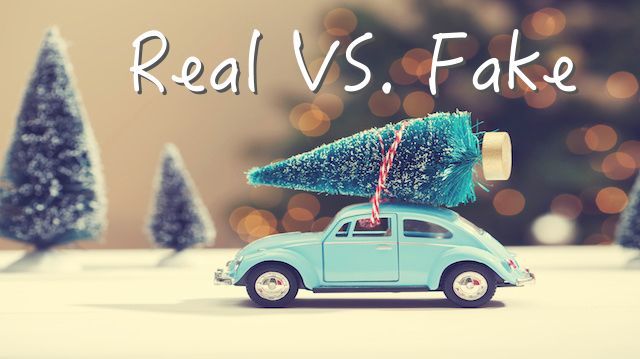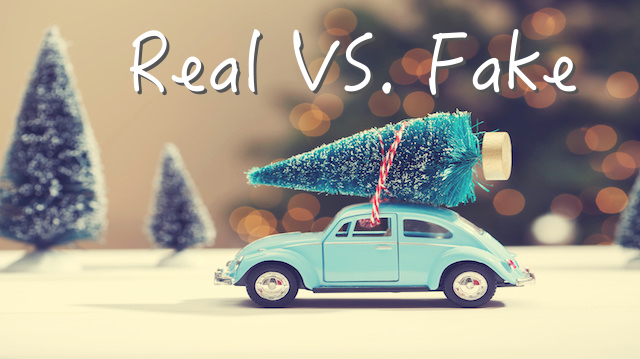
The holiday season is fast approaching and soon we will be decorating the Christmas tree — an exciting tradition for many families. When you dress your tree with the ornaments you’ve collected over the years, are you jazzing up an artificial or real tree?
Just as processed foods are often purchased based on convenience, the same is true for artificial Christmas trees. As quality improves and more features are offered, fewer families are opting to buy — or chop down their own — natural Christmas trees. Convenience is a key contributing factor; however, the question arises, which is better for the environment?
Perhaps you share a similar thought process: purchasing a fake tree that can be used for a few years reduces seasonal waste. This would appear to make sense, yet a recent study suggests you may not be doing our planet any favors. How green is your tree’s carbon footprint?
Study: “Comparative Life Cycle Assessment (LCA) of Artificial vs Natural Christmas Tree”
Conducted in Montreal by the environmental consulting firm, Ellipsos, this study analyzed the environmental impact of real trees versus fake trees. Based on the study findings, it appears that a fake tree would need to be used for 20 years in order for it to be a more environmentally-friendly option.
These results took into account greenhouse gas emissions, human health impacts, and the use of resources. Shockingly, the production of artificial options creates three times the amount of carbon emissions in comparison to real trees. This is based on the assumption that the artificial tree will have a six-year life span. As artificial trees are manufactured and disposed of, they also release carcinogens.
Since this study specifically focused on trees bought in Montreal, either grown in Quebec or made in China, geographic differences could certainly skew results. For instance, if consumers need to drive far distances in order to source a real tree, then carbon emissions in relation to this option would spike.
 It’s important to understand that real Christmas trees are being grown for this exact purpose. Although these trees have a short life span, they are not associated with the higher energy and pollution-related costs when manufacturing artificial options.
It’s important to understand that real Christmas trees are being grown for this exact purpose. Although these trees have a short life span, they are not associated with the higher energy and pollution-related costs when manufacturing artificial options.
In fact, living trees generate oxygen and preserve green space, especially in areas that are under pressure for development. They are also 100 percent biodegradable. Once the holiday season is over, it’s important to dispose of these trees properly — either for mulching or composting purposes — in order to reduce their environmental impact.
How you can make the greenest decision
Of course, driving in your car every day is going to have a greater impact on the environment than your decision to buy a fake or real Christmas tree. But at the end of the day, if everyone focuses on making greener choices, no matter how small, it will make a significant impact collectively.
If you’d like a real tree…
- Buy local whenever possible.
- Support tree farms that use minimal or zero pesticides.
- Acquire a permit to cut down a tree on land that needs to be cleared for a hydro right-of-way — the trees will be cut down anyway so this is a good way to make use of them.
- Rent a potted tree — there are companies that deliver live trees for you to enjoy over Christmas. Once Christmas is over, they’ll pick up the tree and care for it until next year.
Special: Upcycling Your Live Christmas Tree
If you’re going to purchase an artificial tree…
- Plan on using it for twenty years.
- Avoid trees that are produced with PVCs — these are both hard on the environment and your health.
If you’re planning on making your artificial tree last, then it may seem like the greener choice in the long run. However, it’s important to remember that unlike real trees, artificial options are not biodegradable, they require fossil fuels for production, they end up in landfills, and they’re often shipped from the other side of the world, contributing to their overall carbon footprint.
This debate has been ongoing for years and will more than likely continue into the future. At this time, based on the average life span of artificial trees, it appears that real trees are less harmful to the environment. This information is available so that you’re able to make more informed decisions — choose responsibly.
—The Alternative Daily
Sources:
http://ellipsos.ca/lca-christmas-tree-natural-vs-artificial
http://www.davidsuzuki.org/what-you-can-do/queen-of-green/faqs/holidays/green-christmas-trees

